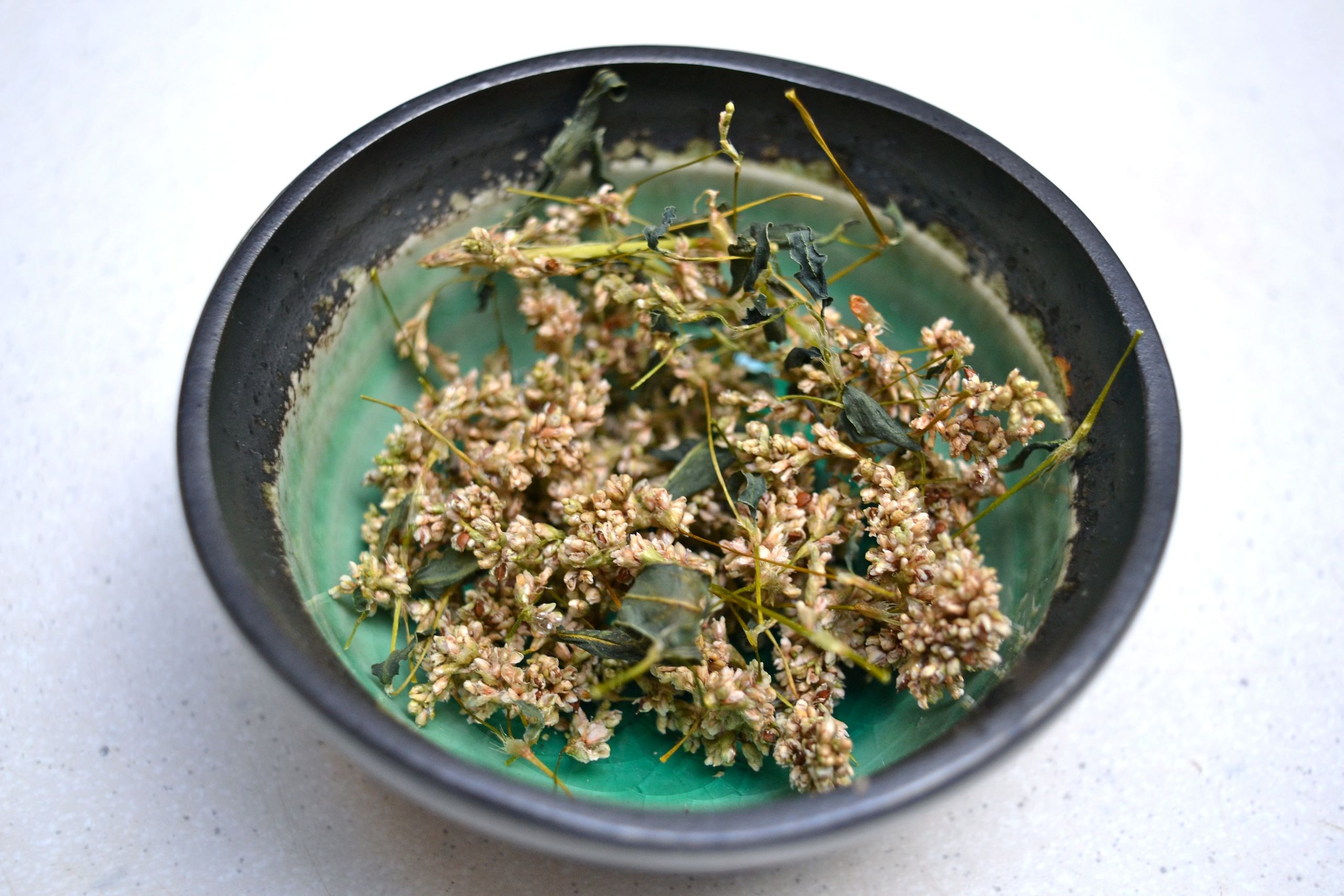I harvested seeds from my dye plants last year, for the first time. So instead of just counting on the seeds, I decided to test their germination before spring truly arrives.
~
Last year, I harvested seeds of dyer’s coreopsis and woad from the garden, not a big surprise there. Coreopsis is an annual, and will make huge numbers of small seeds. My woad plants were in their second year, so their seeds were also expected.
The surprise was my Japanese indigo. When I harvested my last plants on October 24th last year, several plants were flowering. On a whim, I potted a plant that I had just ripped out of the soil with roots, and brought the pot inside. There, it calmly kept growing, actually until we went to London for Christmas – the plant had died when we came home. When I was going to throw it, I noticed the seed, good numbers, actually. But it did spend the summer outside with the bees.

I tested the germination of all my dye seeds by placing 10 seeds in moist kitchen paper towel in a ziplock bag that I put under the microwave oven where it’s warm and dark. From January 31st, I let the seeds germinate for a week, and got this result:
Coreopsis, harvested September 27th – 5 out of 10.
Coreopsis, harvested October 24th – 6 out of 10.
Woad – 5 out of 10.
Japanese indigo – 9 out of 10.
Not bad! That was on February 7th, so I decided that this was still too early for the coreopsis. Also, I just sewed it directly last year. So I tossed the sprouted coreopsis for now.
The sprouted woad and japanese indigo, on the other hand, went into seed-starting pots where they now grow. Last year, I found that I was too late in the season, and that was with germination beginning on April 16th. My notes are sporadic, but it seems they grew in the seed-starting pots for about a month, and in larger pots outside for another month before I transferred them to the garden. So that would have been mid-June.
Various sources disagree on when to start seeds indoors, maybe because they are written for different climates? Recommendations range from early May, 2-3 weeks before the last frost to 6-8 weeks before the last frost.
According to (the authoritative?) “Handbook of Natural Colorants” chapter 7, “Indigo – Agricultural Aspects”, Japanese indigo should germinate inside in April and be transferred to open land in June – and that just happens to be what I did last year (although I hadn’t read that chapter yet). The book goes on to conclude that Japanese is a good crop for Central Europe, but not for England and Finland because the growing season is too short.
I imagine that it’s possible to beat the short season by transferring well grown plants, and doing it earlier than June. So that’s why my sprouted indigo is allowed to continue growing indoors, and more seeds are germinating. Even though this is what it looks like outside:
